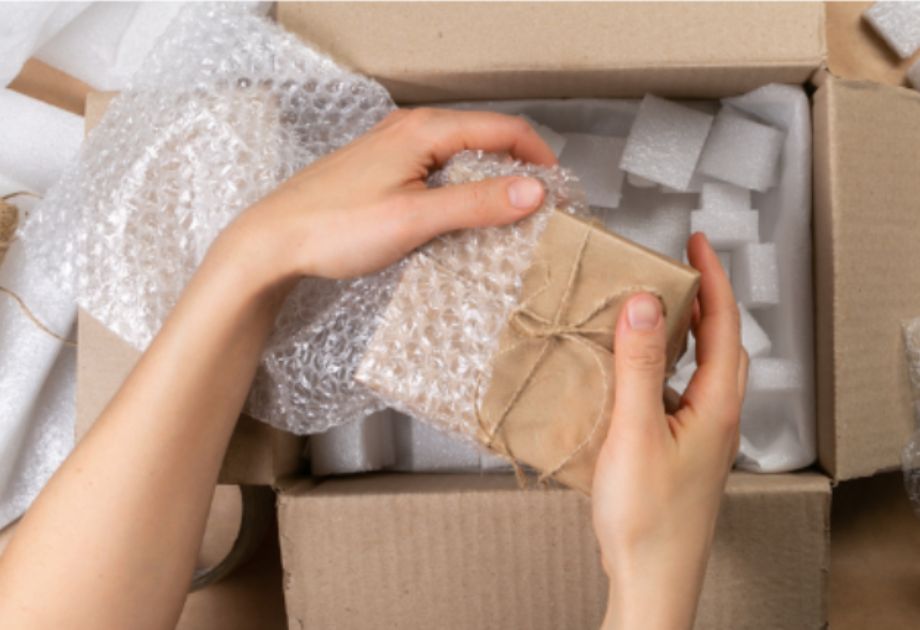5 Tips to Protect Your Packages in Transit
5 Tips to Protect Your Packages in Transit
.jpg)
How often do you pack a product with care, only to worry about what condition it will be in when it reaches its destination? No matter how efficient your process is, once a package leaves your facility, it faces unpredictable conditions.
Packages are stacked, shifted, exposed to temperature changes, and sometimes handled roughly. When something arrives damaged, the impact is bigger than just a broken item. It can lead to customer frustration, increased returns, and added costs that affect your bottom line.
Protecting your shipments starts before they leave the building. It depends on the materials you use, how your items are packed, and how well your packaging holds up in real-world conditions. Whether you're managing high order volumes or overseeing warehouse operations, small improvements can lead to better outcomes.
In this article, we’re sharing five practical tips that can help your business reduce shipping damage, avoid unnecessary costs, and make sure every package arrives in the condition your customers expect.
Minimize Damage with Smart Packing Techniques

Every step in your packing process plays a role in how well a shipment performs during transit. From selecting the right box to sealing and labeling, small decisions can prevent big problems. The tips below focus on practical, real-world solutions to help you improve package protection from the inside out.
1. Start with the Right Size Box
The box is the foundation of every shipment, and using the wrong size can invite trouble. A box that’s too large leaves space for items to shift or collapse. One that’s too small may compress your product or prevent proper padding.
Choose a box that fits your item with enough room on all sides for protective materials. Corrugated boxes offer durability and are available in various strengths, so be sure to match your box to the weight and fragility of your shipment. This choice can make a significant difference in how well your packaging holds up under pressure.
2. Add Cushioning on All Sides
Once you’ve selected the right box, the next step is to add protective materials that prevent movement and absorb shock. Items that can slide or bounce inside the box are at a much higher risk of damage.
Use cushioning materials such as bubble wrap, foam inserts, or kraft paper. Be sure to fill any empty space around the product and wrap fragile items individually. This helps prevent contact between items and keeps everything secure, even when the box is handled roughly or stacked during transport.
3. Secure Everything with Industrial-Grade Tape
Even a well-packed box can fail without the right tape. Weak seals or poor application can lead to broken packaging, lost items, or exposure to the elements.
Use a pressure-sensitive, industrial-grade tape that’s at least two inches wide. Apply it using the H-taping method, sealing the top and bottom seams securely. For heavier shipments, reinforce the corners and edges to add strength where boxes are most vulnerable. A strong seal helps your box stay closed from warehouse to doorstep.
4. Label Your Package for Handling and Delivery
Labels play a crucial role in getting your package to the right place and treated the right way. Clear, correct labeling helps handlers understand how to move the box and provides backup information in case the exterior label is lost.
Make sure your shipping label is printed clearly and placed on a flat, visible surface. If your shipment is fragile, oversized, or has specific orientation requirements, add handling instructions such as “Fragile,” “This Side Up,” or “Handle With Care.” Including a duplicate label or packing slip inside the box also adds an extra layer of protection if the outer label is damaged.
5. Put Your Packaging to the Test
A quick check before shipping can go a long way in preventing damage. Simple steps like shaking the box to detect movement, stacking it to test compression, and inspecting corners and seams for weak spots can help you catch problems early, before they affect your customers.
If you want to take it a step further, understanding how your box is rated for strength can make a significant difference. Not all corrugated boxes perform the same under pressure. Tests such as the Mullen Test and the Edge Crush Test are used to measure durability and resistance to handling stress.
To see how these testing methods work and how they can help you choose stronger, more reliable packaging, take a moment to read our article on Mullen and Edge Crush Test standards. It’s a useful resource for evaluating your packaging and making informed decisions that improve performance in transit.
Ship Smarter with AM Shipping Supplies
The way you package and ship your products affects performance, customer satisfaction, and return rates. When damage is reduced, operations run more smoothly, and your customers receive exactly what they expected.
At AM Shipping Supplies, we understand the real-world challenges of shipping. That’s why we offer a wide selection of durable corrugated boxes, cushioning materials, sealing products and expert advice to help you ship with confidence. Whether you need help choosing the right box strength or want reliable supplies you can count on, our team is here to help.
Let us help you build a better packaging strategy from the inside out. Browse our shipping supplies or contact our team today to get started.
Happy with the difference AM Shipping Supplies has made for your business? Click here to leave us a five-star review!
